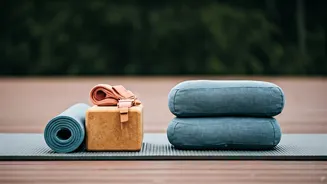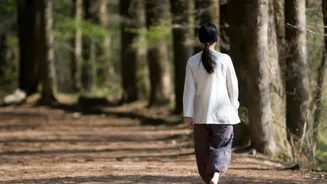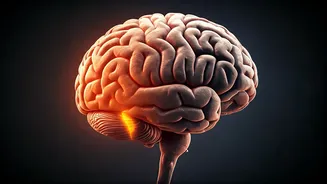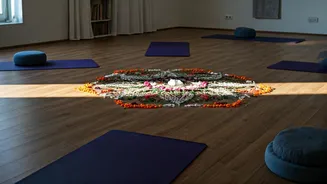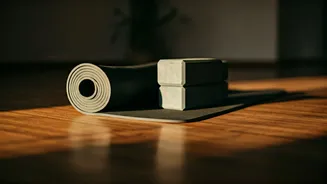Introduction to Yoga
Yoga, a practice rooted in ancient Indian traditions, is more than just physical postures; it is a holistic approach to well-being. It integrates physical exercises
(asanas), breathing techniques (pranayama), and meditation to unite the mind, body, and spirit. The benefits extend beyond flexibility and strength, reaching into areas like improved mental clarity, reduced stress, and increased focus. This article highlights specific yoga poses, each contributing unique advantages, particularly in enhancing cognitive function. These practices are easily accessible and can be adapted to various fitness levels, making them a practical addition to your daily routine, enhancing overall mental performance and promoting a sense of calm.
Vrikshasana (Tree Pose)
Vrikshasana, or the Tree Pose, is a balancing posture that enhances both focus and stability. To perform this asana, begin by standing tall with your feet together. Then, shift your weight onto one leg, and place the sole of the other foot either on the inner thigh or the lower part of the standing leg, avoiding the knee. Ensure your hips are square and your core is engaged to maintain balance. Bring your hands together in a prayer position at your chest. Gaze at a fixed point in front of you (drishti) to aid balance. Hold the pose, breathing deeply, and feel your body grounded like a tree. Vrikshasana enhances proprioception, the body's awareness of its position in space, and cultivates a sense of calm. The concentration required to maintain this pose directly translates into improved mental focus in everyday tasks.
Ardha Matsyendrasana
Ardha Matsyendrasana, or the Half Lord of the Fishes Pose, is a seated spinal twist that aids in spinal flexibility and stimulates the digestive system, indirectly benefiting mental clarity. Sit with your legs extended. Bend one knee, placing the foot on the opposite thigh. Bring the other leg alongside the hip, ensuring your spine is straight. Inhale to lengthen your spine, and exhale as you twist towards the bent leg, placing your opposite hand on the outside of your bent knee and the other hand behind you. Look over your shoulder, gently deepening the twist with each exhale. This pose enhances blood circulation to the spinal nerves, revitalizing the body and mind. The gentle twisting motion stimulates internal organs, promoting overall health and a sense of well-being, which contributes to clearer thinking.
Bhramari Pranayama
Bhramari Pranayama, or the Bee Breath, is a simple yet powerful breathing technique to calm the nervous system and enhance focus. Sit comfortably, either cross-legged or in a chair, keeping your spine straight. Gently close your ears with your thumbs, and place your fingers on your forehead and eyes. Inhale deeply through your nose, then exhale slowly while making a humming sound like a bee. Feel the vibrations throughout your head, which helps to relax the mind and reduce stress. This practice is particularly effective in reducing anxiety and promoting a state of mental stillness. The calming effect of Bhramari Pranayama allows for improved concentration and clearer thinking, making it ideal for incorporating into your daily routine, especially during stressful periods.
Padahastasana
Padahastasana, or the Hand-to-Foot Pose, is a forward bend that promotes blood flow to the head and stimulates the brain. Stand with your feet hip-width apart and your hands at your sides. Inhale, and raise your arms overhead. Exhale, and bend forward from the hips, reaching towards your feet. If possible, place your hands on the floor beside your feet. Keep your legs straight, but slightly bend your knees if needed. This pose stretches the hamstrings and stimulates the nervous system. The inverted position improves blood flow to the brain, enhancing cognitive function and reducing mental fatigue. Padahastasana can be a quick and effective method to energize the brain and improve focus, making it a great addition to your morning or midday routine.
Supta Baddha Konasana
Supta Baddha Konasana, or the Reclined Bound Angle Pose, is a restorative pose that encourages relaxation and opens the hips, easing tension and promoting mental clarity. Lie on your back with the soles of your feet together, letting your knees fall open to the sides. Place a pillow or a bolster under your head and another under each knee for support, if needed. Rest your arms at your sides or on your belly. Breathe deeply, focusing on your breath, and allowing your body to relax completely. This pose calms the nervous system and reduces stress, which are crucial for improving focus and memory. By promoting relaxation and releasing physical tension, Supta Baddha Konasana provides a peaceful state of mind, which makes it easier to concentrate and remember information.
